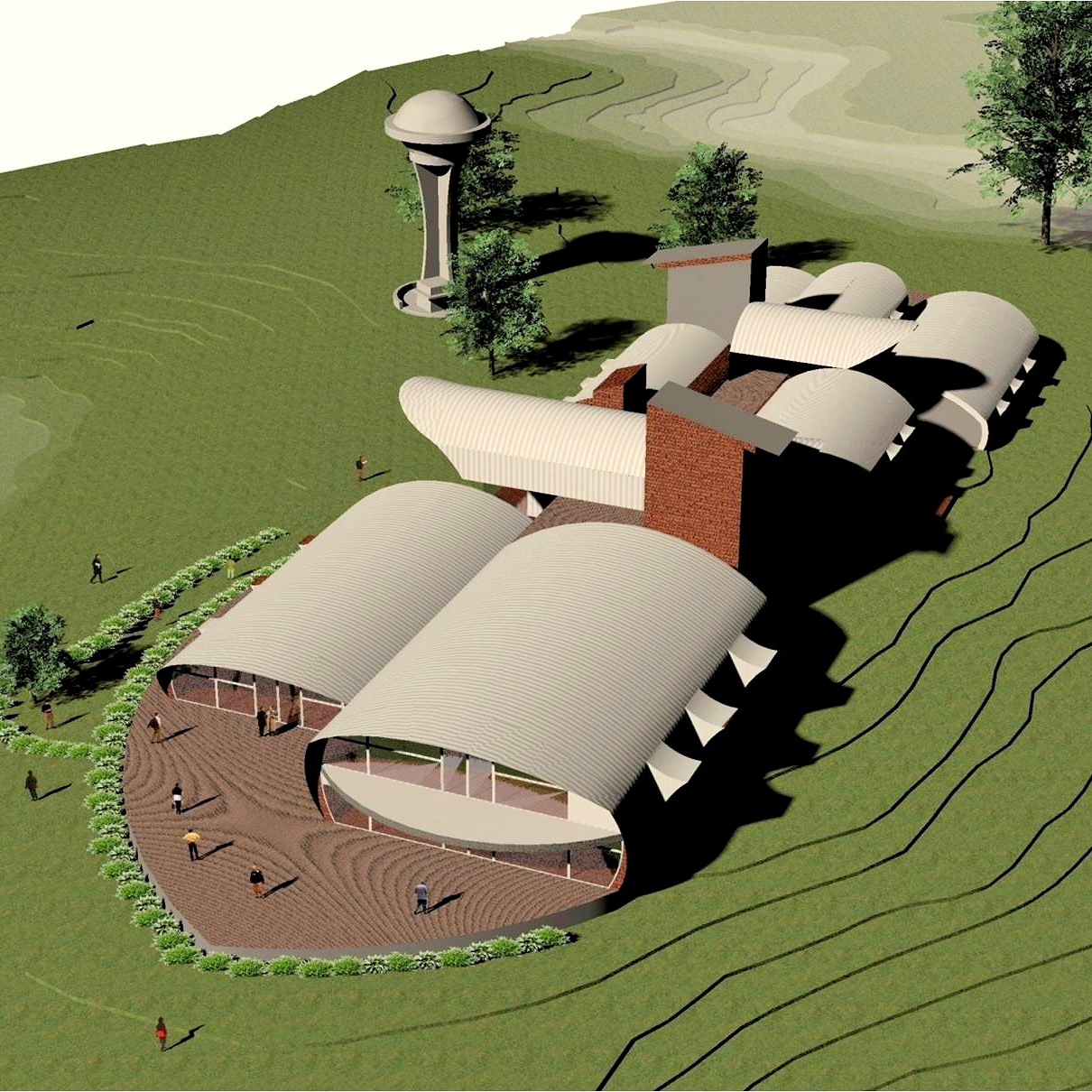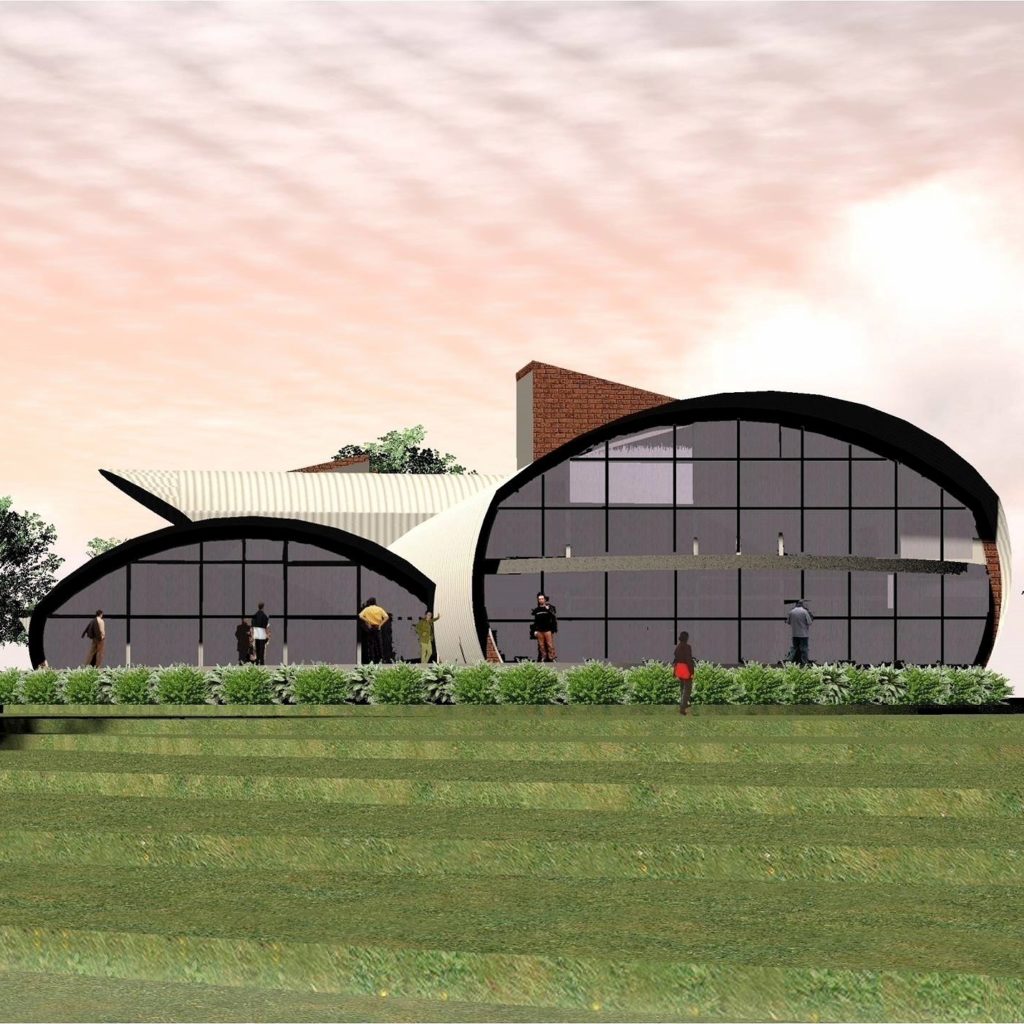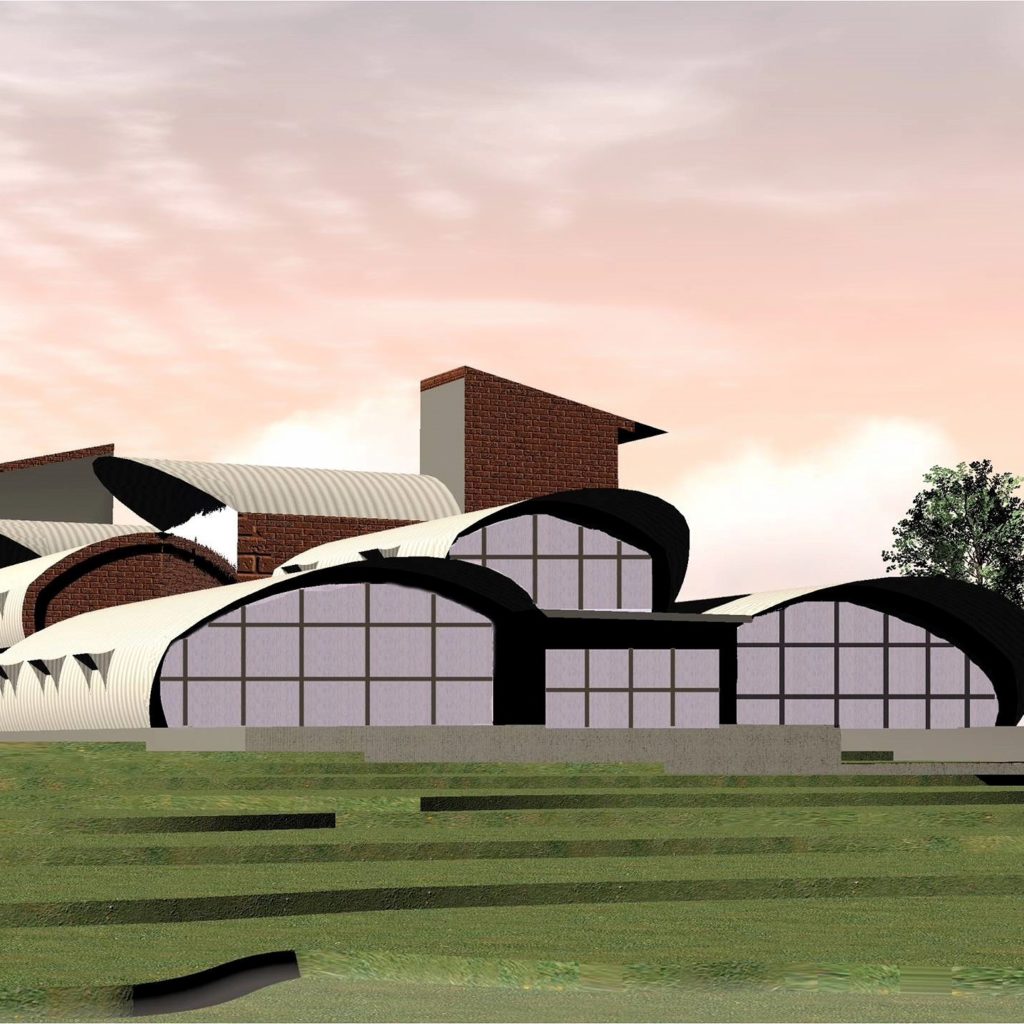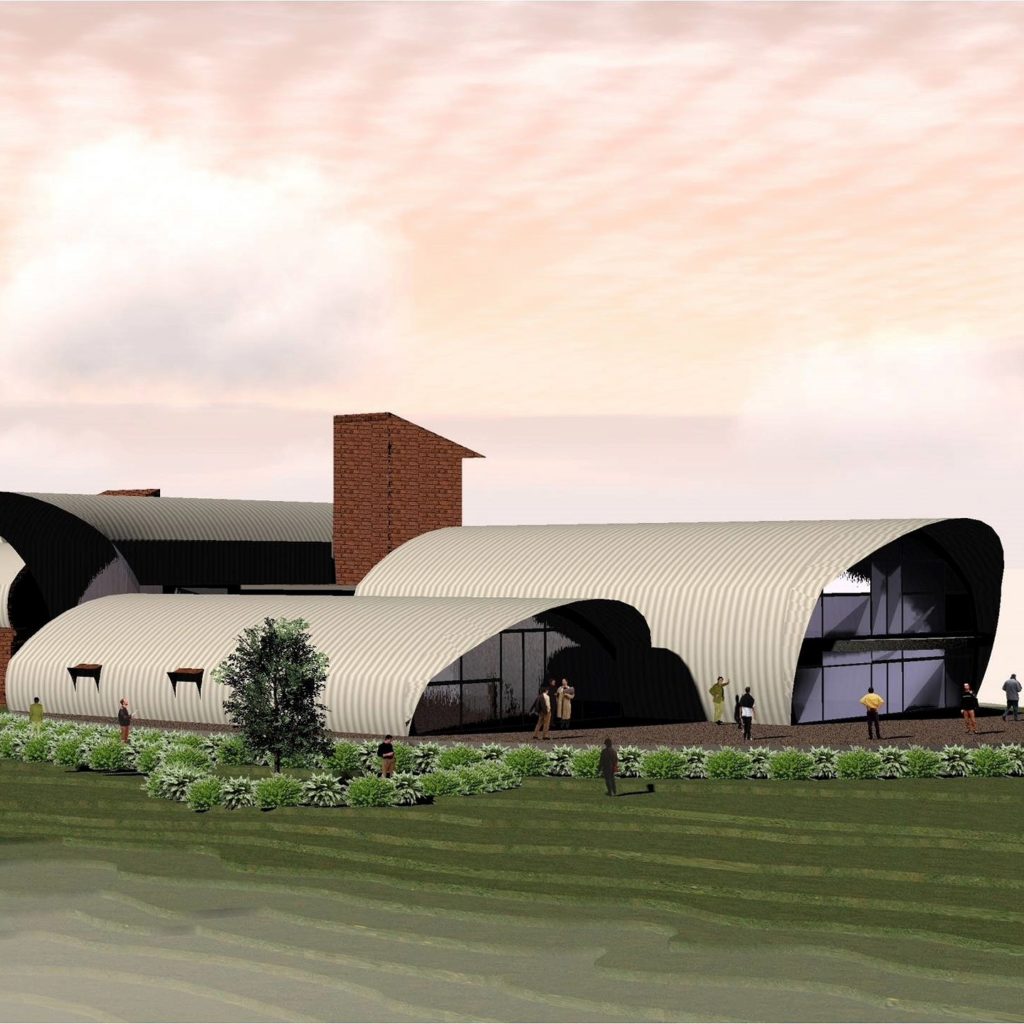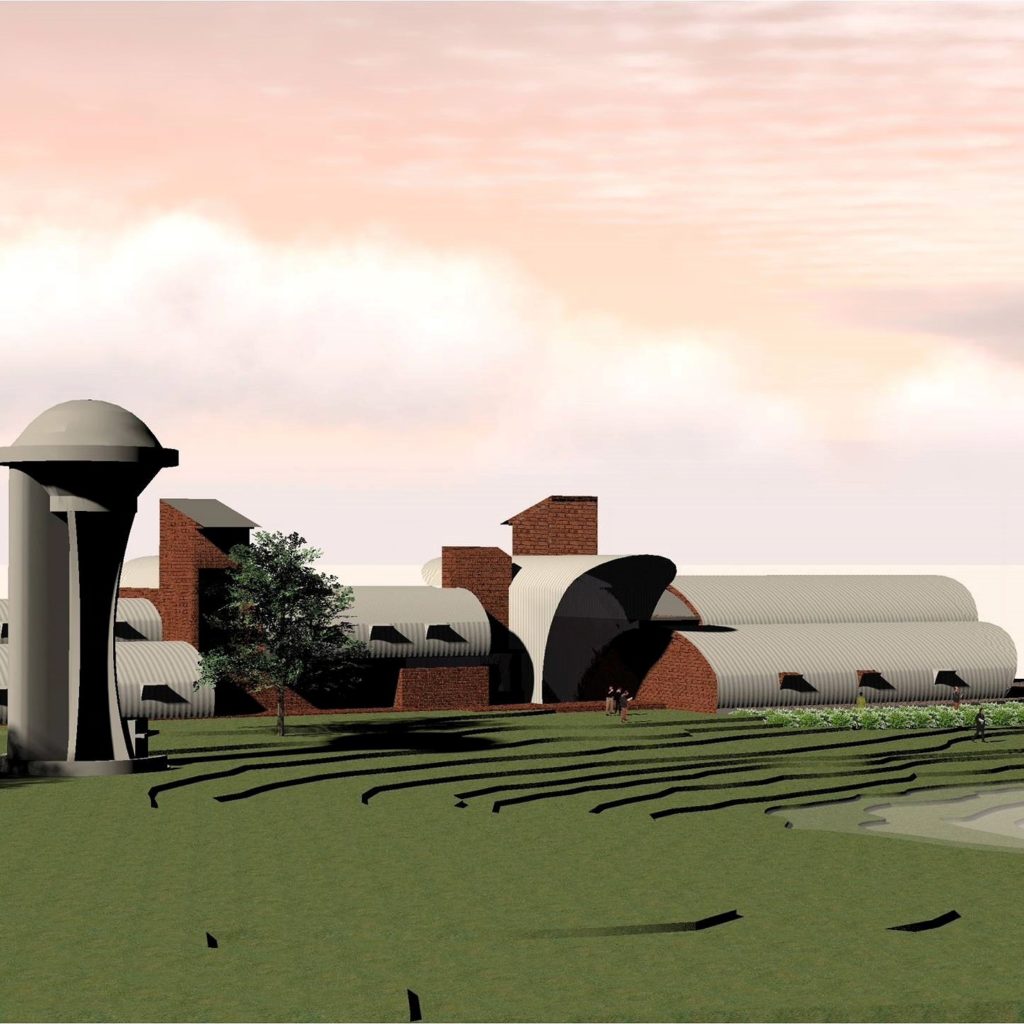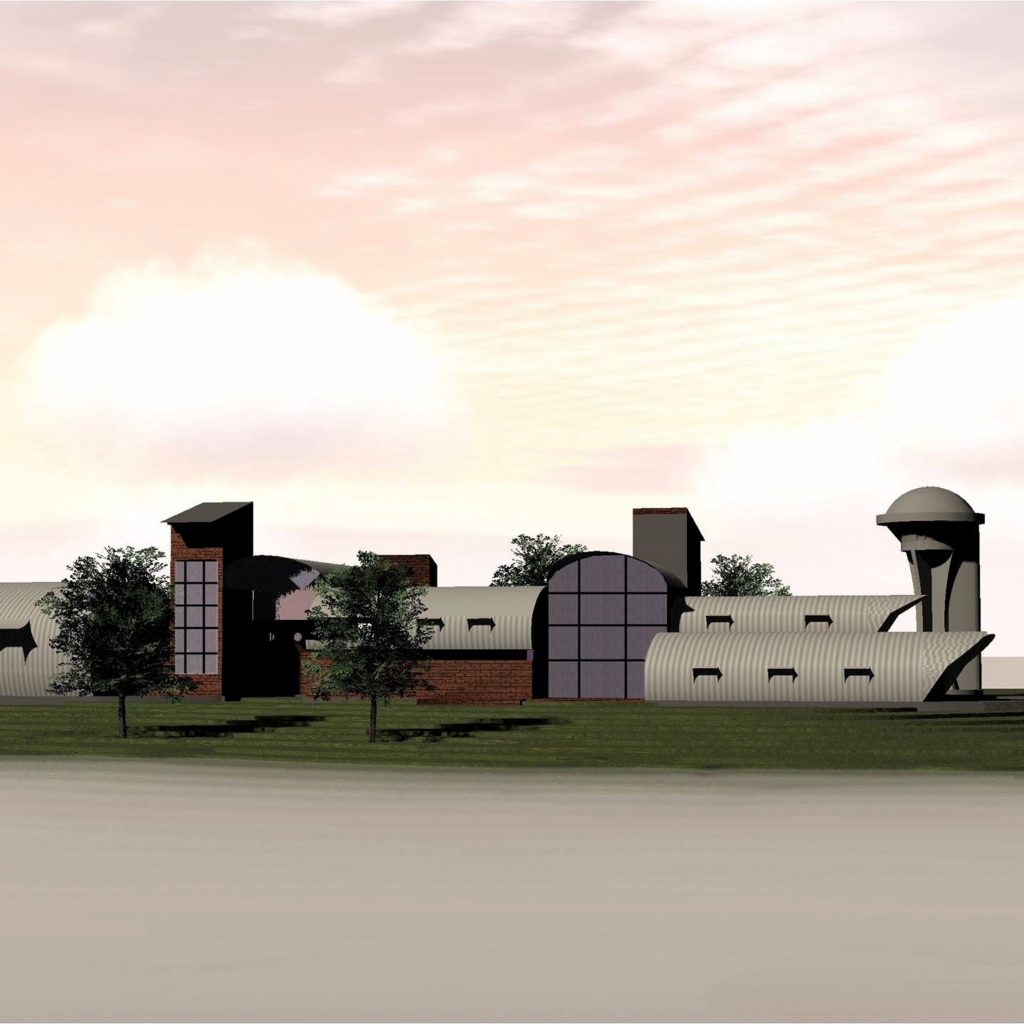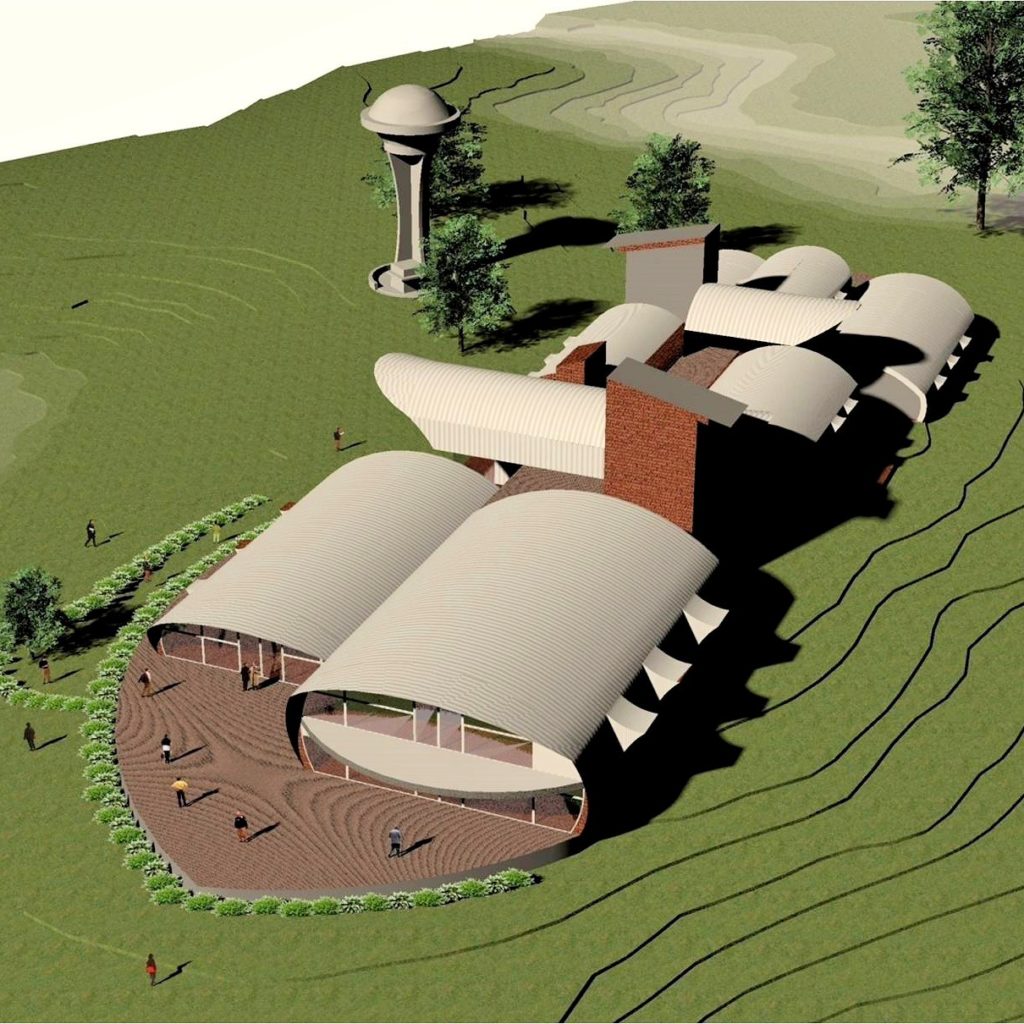NEGOTIATION AND SYMBOLIC MORPHOLOGY IN CONTEMPORARY INDIAN ARCHITECTURE
In an oft quoted excerpt from The Fountainhead, Howard Roark, the archetypal heroic figure of modernist architecture, explains why fluting on classical columns was an attempt to ‘hide the joints in the wood’, and why we’re better off just having a clean slate.
As admirable as simple functionalism may seem, its idealism ignores the reality of architectural design – – the fact that, in the context of history, architectures of the present symbolically inherit these “Joins in the Wood”.
Every public building is a palimpsest of the time and history it embodies, and at the same time, every building performatively announces its distortions and evolution of function into ritual, ritual into mythology, mythology into symbolic form.
A public building, like a museum, can be a receptacle that gathers the symbolic imagery around it and concentrates it, like sunrays through a magnifying glass.
Aesthetics, then, are not some shallow attempt at embracing the latest ‘trend’, but understanding that a museum building can be a cultural magnifying glass, gathering the visual grammar around it and fragmenting and reorganizing the signifiers into configurations both new and strangely familiar.
In the RSC Kottayam project in Kerala, this reappropriation of the local grammar is done primarily through scale. Scale transforms function into symbol, as master builders have known throughout history. Scaling converts utility into visual memory, whilst making room for new functions to arise. Scaling also bridges the gap between the traditional and the contemporary – – by transforming the traditional and allowing it to continue existing symbolically, we can simultaneously engage in novelty, in spaces of exploration, whilst retaining the symbols that have defined our past.
The massing, recombinant grammar, and functional layout of RSC Kottayam was the result of this thought experiment. The building visually and aesthetically represents the process of symbolic morphology, of conversion of function into collective memory, of accomodative progress. It becomes a metaphor for how the traditional negotiates with the contemporary – – it is, therefore, a snapshot and a microcosm of the cultural complexities and the daily negotiation of culture with modernity that we are enacting in modern India.
REGIONAL SCIENCE CENTRE IMAGES
SITE AND LOCATION
The proposed 30 acres site is located in Kottayam, Kerala. National Council of Science Museums (NCSM) intends to establish a Regional Science centre at Kottayam to empower people through science communication and to create scientific temper among masses in general and youth in particular by providing a participatory non formal approach in learning process.
The site is close to the state highway and easily accessible by public transport.
The site has a contour elevation of 20 metres between the highest to the lowest point.
The macro climate is altered by the sea breezes from the Arabian Sea which is approximately 25km from sea level.
The micro climate is also altered by the deciduous vegetation around.
DESIGN INTENT
A Regional Science centre provides an activity based learning environment. It is characterised by its two-pronged channel of communication- Exhibits and Activities. While the exhibits, both indoor and outdoor, are mostly interactive, the demonstrations and training programmes are fully participatory and help children and adults alike to learn the basics of science through fun and enjoyment.
CONCEPT
The silhouette scape of Kottayam, Kerala is mostly dominated by the sloping roofs where as this Science centre has a very unique silhouette with a sense of belongingness to the place with an interesting variation from sloping roofs to vaulted roofs derived from a traditional vernacular roof form of the house boats.
To construct an iconic built up form on the highest point of a hillock is an age old tradition adopted world over to establish the grandeur and importance of a public building of this nature. The same concept has been adopted here.
SITE PLANNING
The Main entrance to this complex is from the North East. The public parking has been proposed at the lowest level in the Site adjacent to the Main Entrance.
The pedestrian takes over the public movement towards the building and sequentially unfolds it by the virtue of its setting on the top most contours of the site.
The entrance road bifurcates into two parts and one part leads to the Main Entrance to the Science centre meandering through the science park and the other access leads to subsidiary entrance for the Auditorium and the Activity Centre from the South
The Science park has been integrated . between the approach roads along the sloping contours. The access road to the auditorium further leads to the loading/unloading area towards the exhibit development and temporary exhibition side.
A overhead tank has been proposed as per the Master plan requirement of that area.
BUILDING PLANNING
The Science Centre is broadly divided into 4 parts (a) Main exhibition area (b) Visitors’ activity area (c) Exhibit Development Laboratory and office (d) Outdoor science park.
The building is zoned into public, semi public and private areas which are integrated together by a single circulation spine connecting the two entrance lobbies with high and spacious atriums.
The proposed building is 2 storeyed with the main exhibition halls clustered around the main entrance lobby in 2 floors with two halls in the ground floor and one hall in the first floor.
The exhibition halls opens out to large decks for prominent outdoor exhibits and also provides a psychological to the visitors after going through varied participatory exhibits within the halls.
The decks also provide a grand visual vista for the entire flora and fauna of the entire site.
The secondary entrance connects the auditorium, 3D hall, computer room, temporary exhibition hall through lobbies and circulation spine in the ground floor.
The main exhibition hall in the first floor is connected through the atrium to the children’s activity centre, adult training centre and the library.
The service core consisting of staircase lifts and toilets are strategically located around the both the atriums.
The overall planning of the main building caters to the functional requirement of the science centre in a compact and at the same time in a spatial manner with play of scales and volumes.
The exhibit development area , temporary exhibition halls and workshop are serviced through a service deck at the rear side with loading unloading areas.
The entry and exit for the building runs through the outdoor science park which adds to the science centre experience.
To exploit maximum North and East light, the public spaces are to the north.
The building is on the top most contours which are linear and are oriented North-South.
The cut and fill for the building is completely reduced due to its appropriate anchoring.
A large designated area has been earmarked for future expansion.
Effort has been made to extract a lot of appropriate details from the idea of a Kerala House boat which responds well to its setting.
The traditional Kerala Laterite bricks have been articulated into some of the solid elements of the building to give a sense of belongingness to the place.
Curved steel roofs which take the shape and silhouette of house boats get integrated with other materials to achieve an innovative building language.
The overall form gradually merges into its surrounding environment.
STRUCTURAL SYSTEM
A combination of Laterite masonry, RCC and steel structure is being adopted for the building.
For lesser spanned spaces, Laterite and Brick masonry are adopted due to their structural capacities.
Whereas the larger halls which require column free spaces are sheltered by metallic shells which are of structural steel and galvanum sheet depending upon the volumetric requirements for particular spaces.
The window openings and hoods are merged with the steel structure itself.
